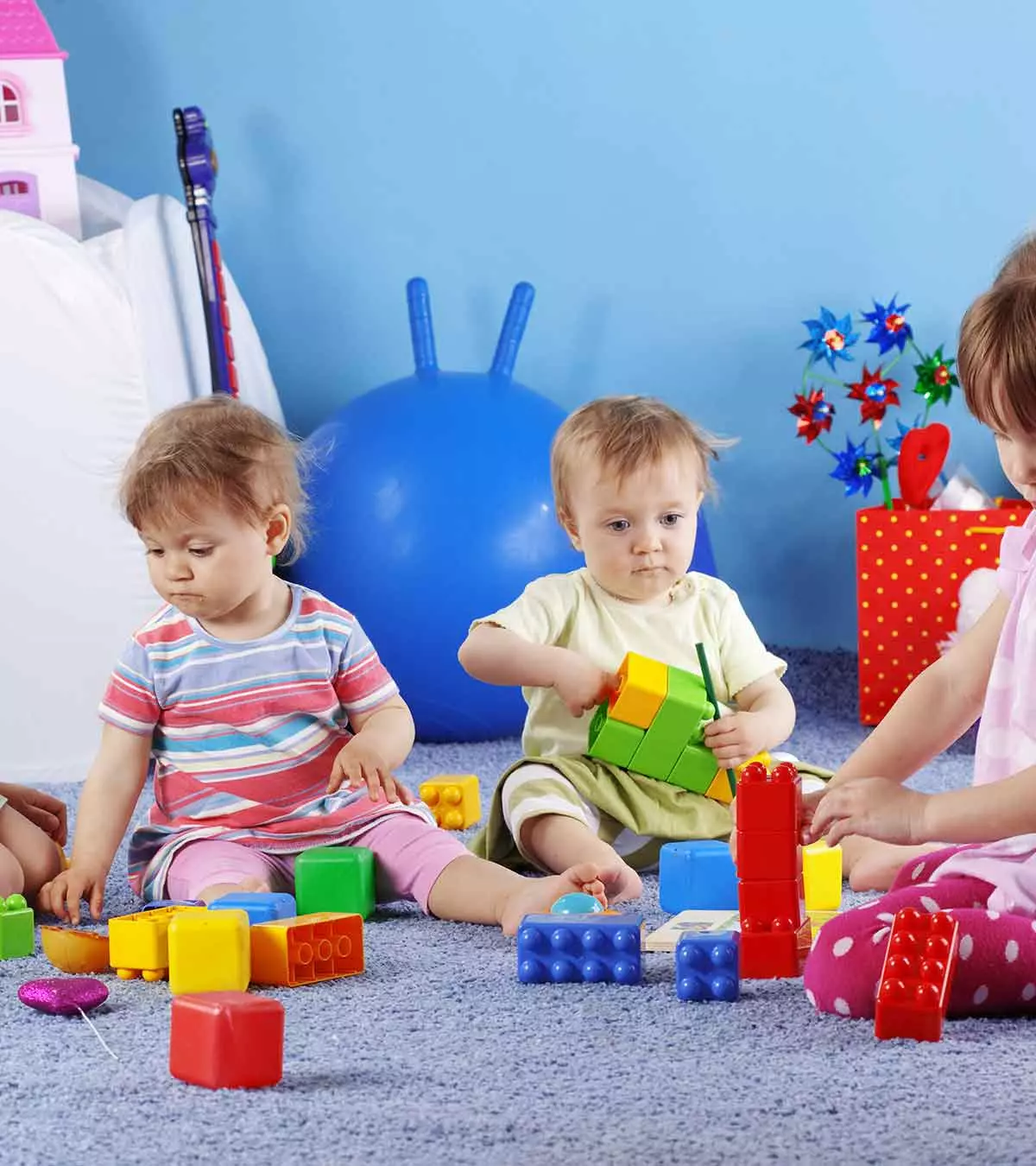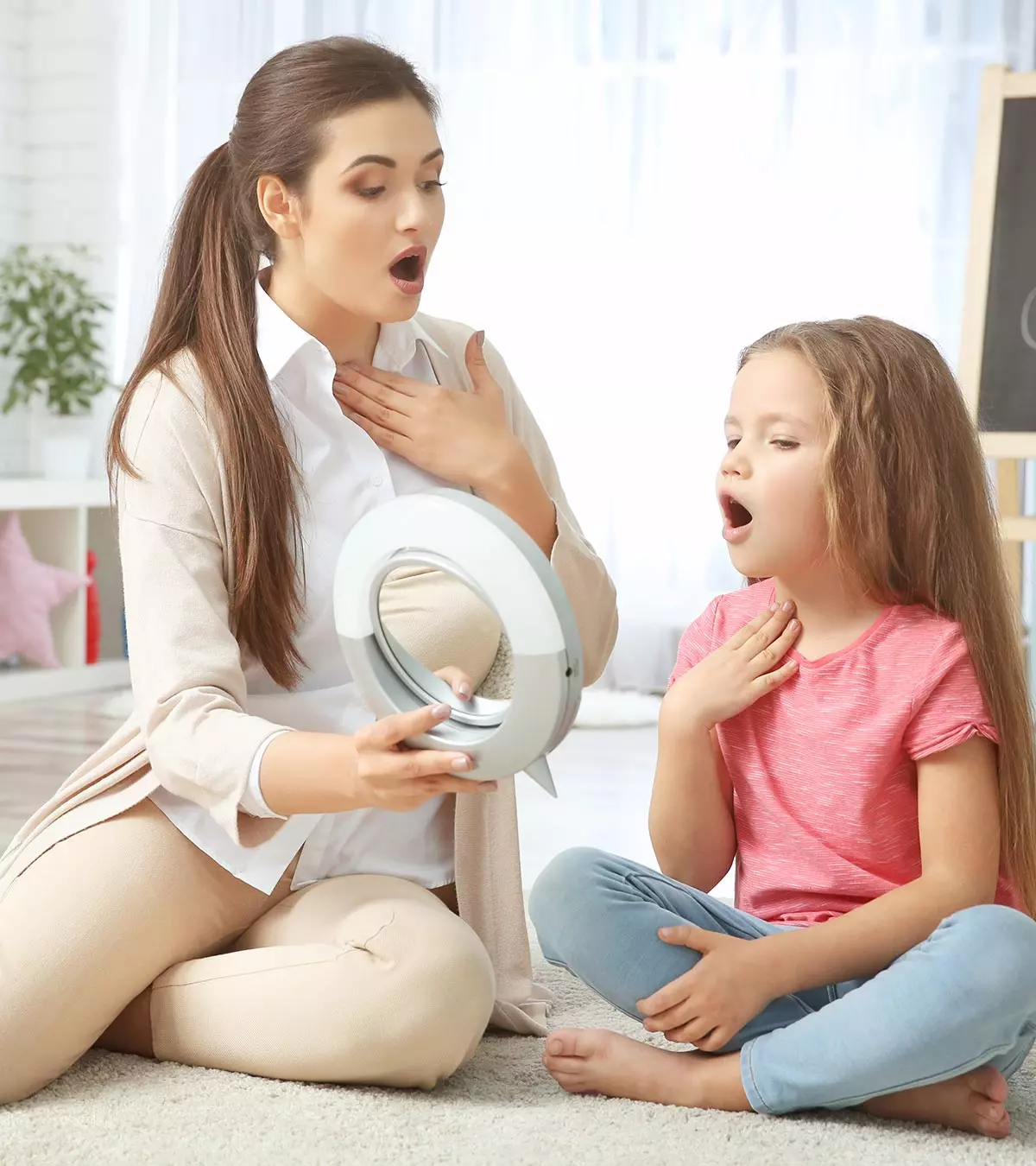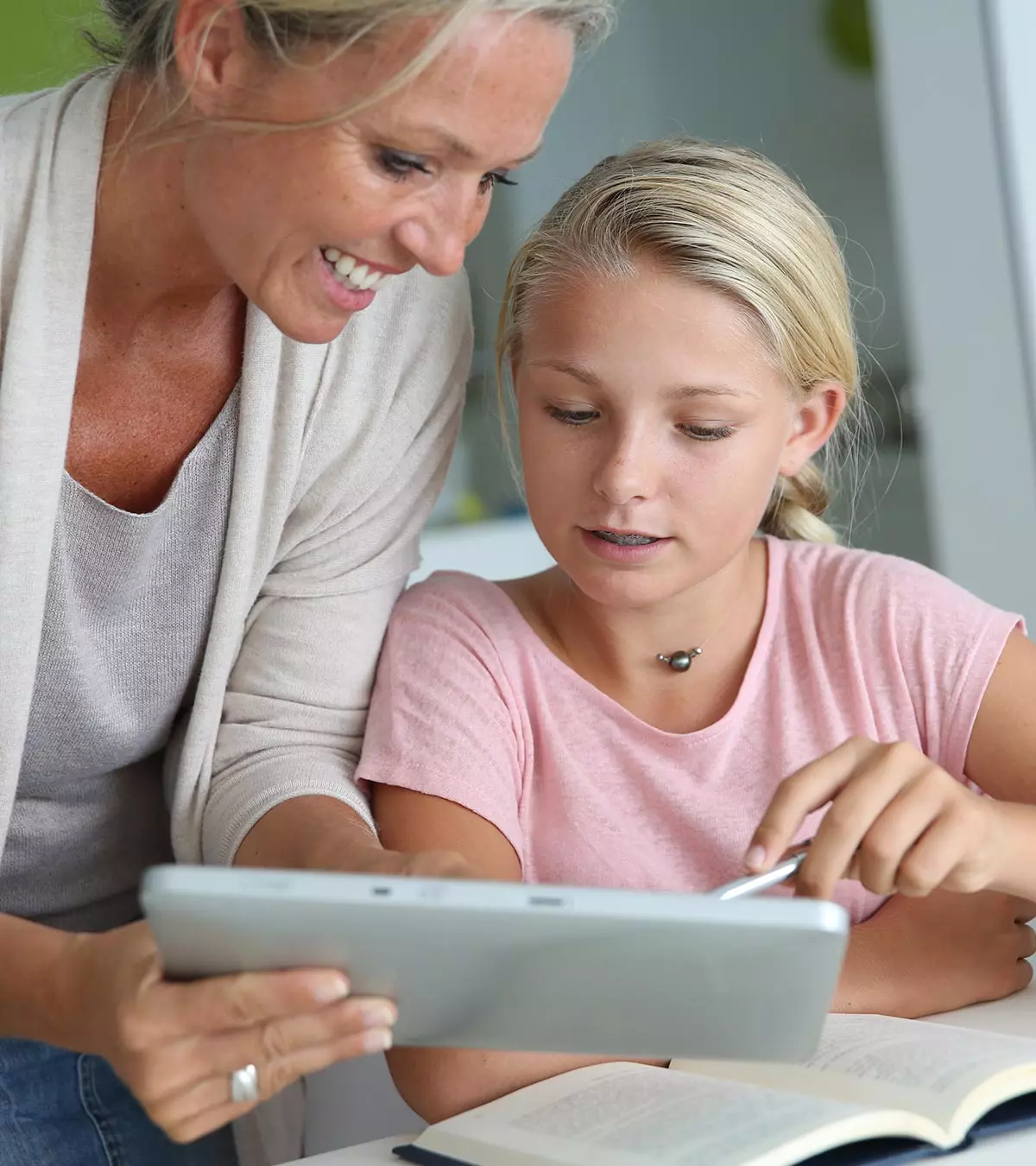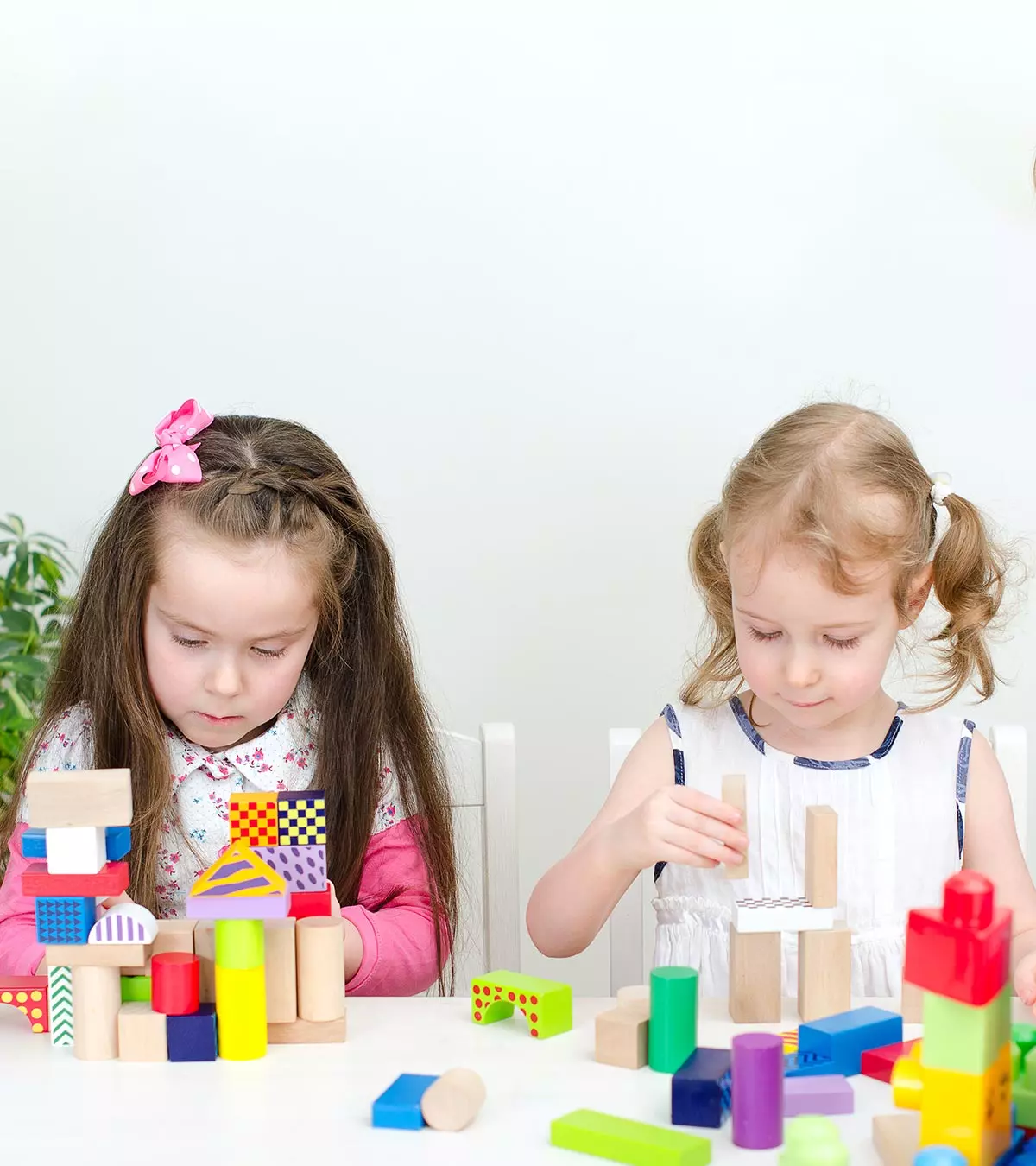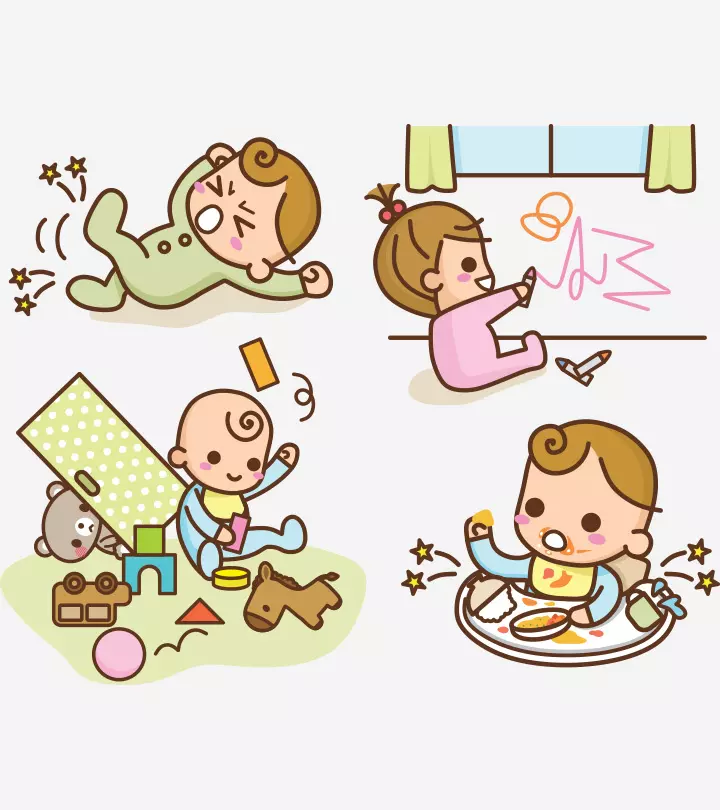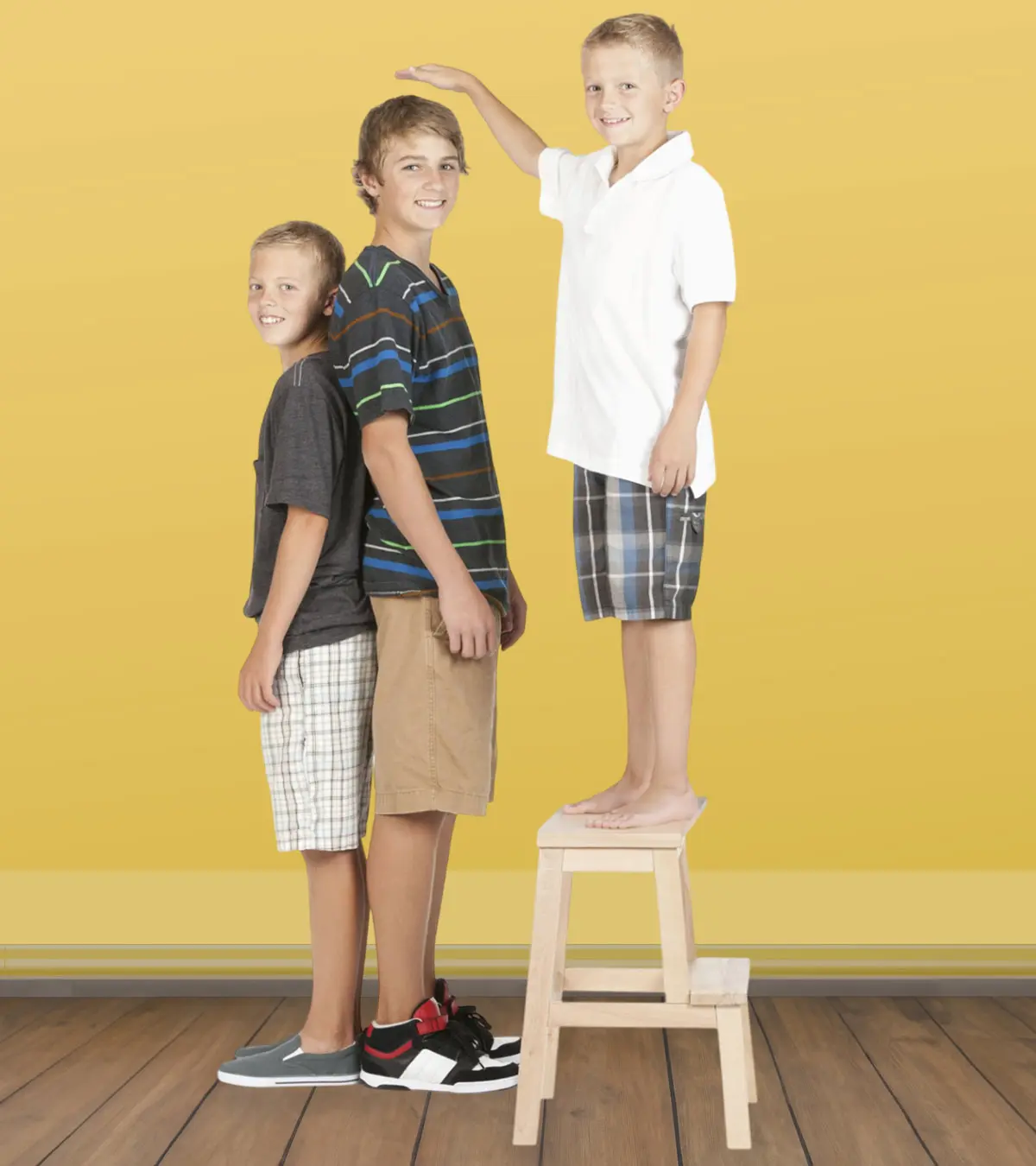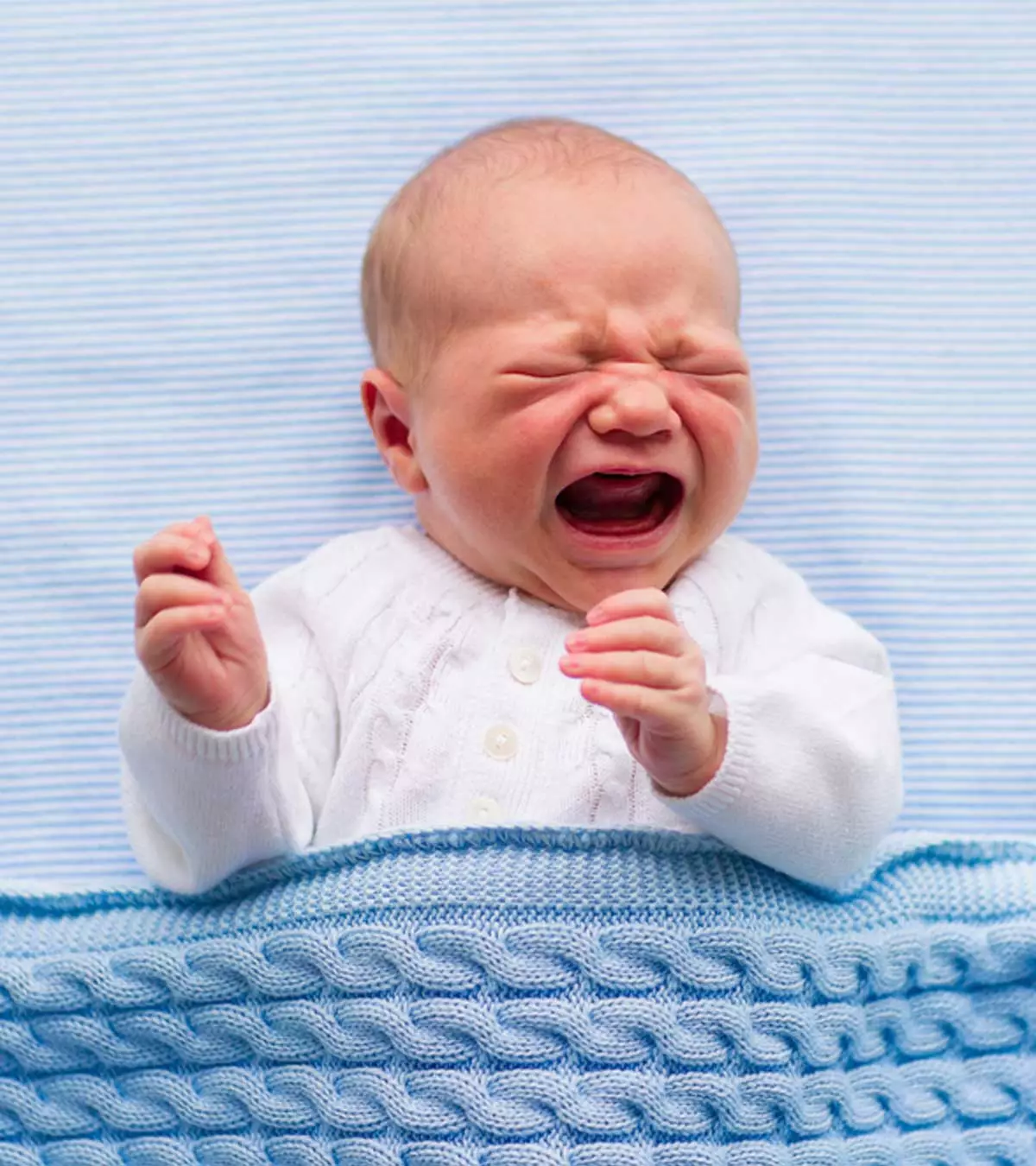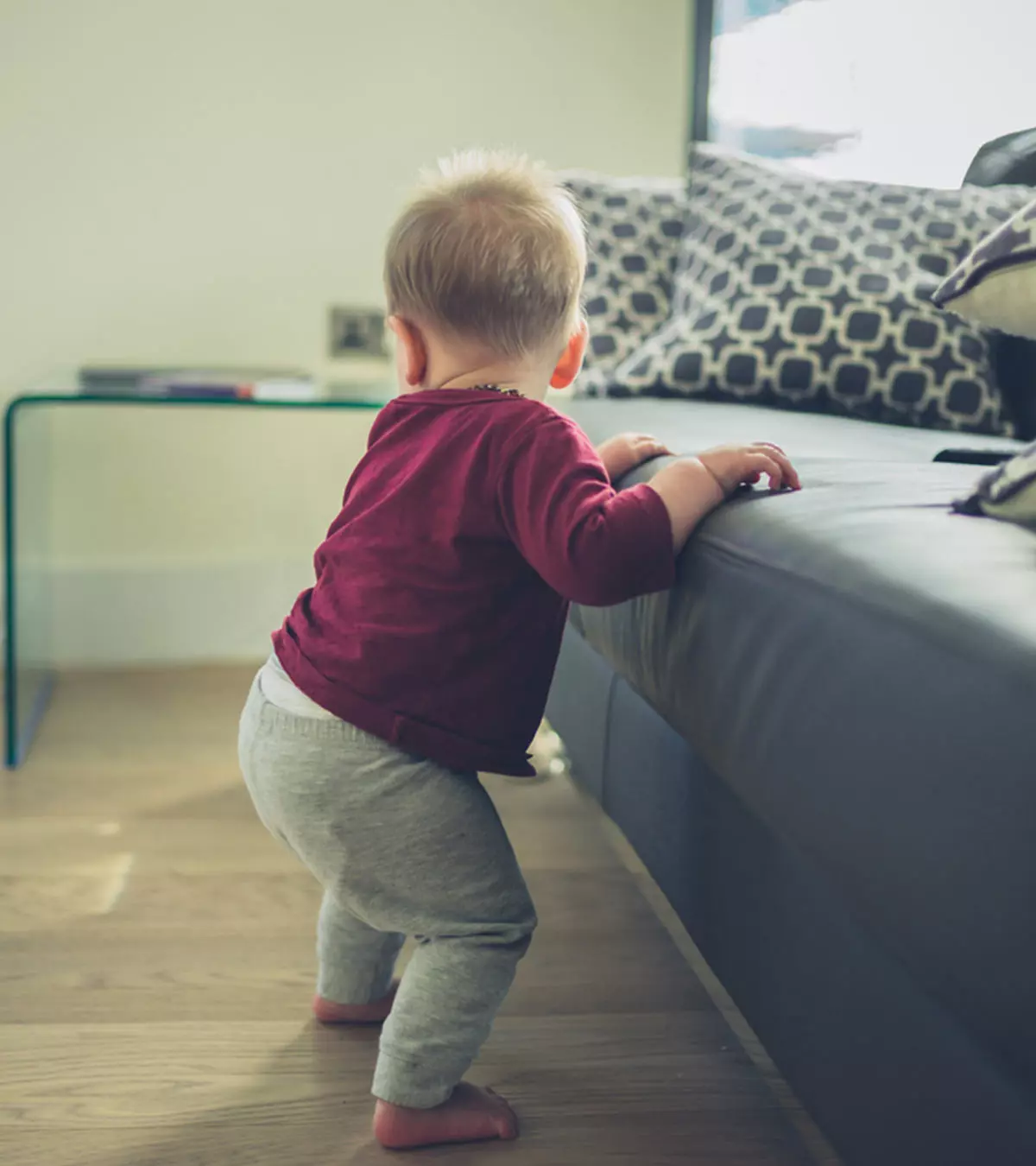
If you see your baby cruising, toddling, or trying to walk with the support of objects or furniture, rest assured that they have achieved a vital physical development milestone. Cruising is the transition from crawling to walking. Most toddlers begin cruising spontaneously when learning to walk, while some cruise and crawl simultaneously. Regardless of how your baby cruises, it strengthens their leg muscles, making it an essential precursor to walking.
Keep reading this post to understand when your baby will cruise, how it evolves, how to encourage it, and ways to keep the little one safe while they cruise around.
Key Pointers
- Cruising is when a baby transitions from crawling to walking.
- The initial steps of your baby may be wobbly, and they may even alternate between crawling and cruising.
- Cruising may be encouraged by baby-proofing your house.
- Prevent your other children or pets from accidentally tripping the baby during cruising.
When Do Infants Start Cruising?
According to the American Academy of Pediatrics, babies begin to cruise anytime between the ages of eight and 12 months (1). It is also the phase when babies start crawling. As your baby becomes adept at crawling, they will pull to stand, that is, get into a standing position while using an object for support.
Most babies can cruise by the age of ten months, but each baby develops at their own pace. If your baby can crawl and pull to stand by the age of 10-12 months, they are on the right track of physical development, even if they cannot cruise or toddle (2). A baby will eventually learn to cruise between the ages of 12 and 18 months, and most babies are adept at walking without support by 18 months (3).
If your little one hasn’t begun cruising yet, there’s no need to worry; they will do so at their own pace, especially in a stimulating environment. According to an anonymous blogger and mother, ”When my daughter was around ten months old, I couldn’t help but compare her progress to other babies her age who were already cruising around furniture. She was content with crawling and seemed hesitant to take that next step. I worried that something might be wrong or that she was falling behind. With time and patience, my daughter eventually started cruising around 12 months, and now she’s unstoppable! (i).”
 Point to consider
Point to considerHow Does Cruising Evolve In Babies?
The following are the various stages of cruising through which it evolves in babies (4) (5).
- The first step towards cruising is the ability to stand. Your baby may use objects, your hands, or even the support of a toy to get themselves into a standing position.
- The leg muscles are strong enough to propel the baby while crawling but may not hold the baby in a standing position for too long. Therefore, infants may crawl to reach a spot, pull to stand, and get back to crawling to move to the next point of interest.
- The baby may hold an object with two hands when they begin cruising. They might come to a standing position if support from one hand is removed or might fall.
- The initial steps while cruising are likely to be wobbly. Some babies might even walk sidewards while holding onto a support, such as a wall, at the front. A baby may even alternate between crawling and cruising.
- As the leg muscles become stronger, the baby may only use one hand for support. The cruising is likely to be still wobbly while the baby’s steps might be wider. The feet may touch the ground with inaccuracy.
- Once your baby is over 12 months old, they are likely to let go of both their hands and take a few steps without support, finding comfort in their new found mobility and independence. This usually indicates that the baby has reached the end of the cruising stage and will gradually progress to walking.
How To Encourage Cruising?
If your baby has begun cruising, you can encourage them through the following ways.
1. Set up a safe environment

Image: Shutterstock
Create a safe environment for the baby to stand and cruise. You must begin by babyproofing your house. You can babyproof by doing the following things (6).
- Keep any items with chemicals away from the baby’s reach to prevent accidental ingestion. It includes detergents, paint, domestic cleaners, and bleach.
- Make sure choking hazards are beyond the baby’s reach. A few examples are beads in curtains, refrigerator magnets, coins, batteries, and screws.
- Cover electrical outlets with an outlet cover for the baby’s safety.
- Cover sharp corners of objects or walls with bumpers.
- You may place a padded mat or carpet on the floor of the room where your baby is likely to cruise.
- Remove any objects that have the potential to fall if the baby cruises while holding on to them. Remove cupboards that may fall due to the baby’s weight. Also, remove any showpieces or objects that may fall on the baby while they cruise.
 Caution
Caution2. Place objects for cruising

Image: Shutterstock
During playtime, your baby may exhibit cruising behavior, so consider placing objects within the baby’s reach for them to hold or seek support. You may rearrange the furniture at your home to place heavy objects in your baby’s room, playpen, or wherever they cruise the most. These objects must not fall when the baby pulls to stand and should be heavy enough to constantly support the baby’s weight.
There are large toys specially designed for cruising. Some toys may even have wheels to move along with the cruising baby. Pick a toy that best works for your baby. Remember to check the toy’s age and weight limit before purchase.
3. Entice the baby
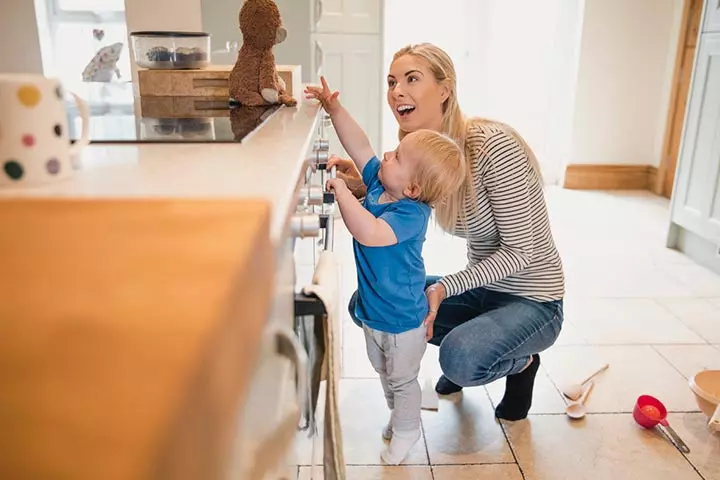
Image: S: iStock
Place the baby’s favorite toy, pacifier, sippy cup, or ask a parent to stand at a place to encourage the baby to cruise and reach them. Begin with a short distance and increase the distance as the baby grows better at cruising.
If the baby crawls and cruises intermittently, you may leave a trail of toys on the floor that the child can follow. If you wish to encourage pull to stand and cruising simultaneously, place toys at a height where the baby can reach only while standing and cruising. You may also make it fun by setting up safe obstacle courses with interactive toys. These measures can also help strengthen the baby’s leg muscles and help with walking.
Observe the baby as they evolve at cruising and make changes to these activities accordingly. Plenty of encouragement and cuddles help the baby stay motivated while trying new skills.
 Point to consider
Point to considerHow To Ensure The Baby’s Safety While Cruising?
Beyond creating a safe environment, the following measures help keep cruising safe for your baby (7).
- Ensure no loose toys, bottles, or clothes are lying on the ground since the baby might trip on them.
- Do not leave the baby alone when they are experimenting with cruising or standing.

Image: Shutterstock
- Put folding chairs and tables out of the safe zone because the baby can get their fingers or toes caught in them.
- If your home has stairways, it is important to place guards or blockades at the bottom for security, as well as at the top to keep the baby out.
- If you have other children or pets at home, make sure you take the requisite measures to prevent them from accidentally tripping the baby during cruising.
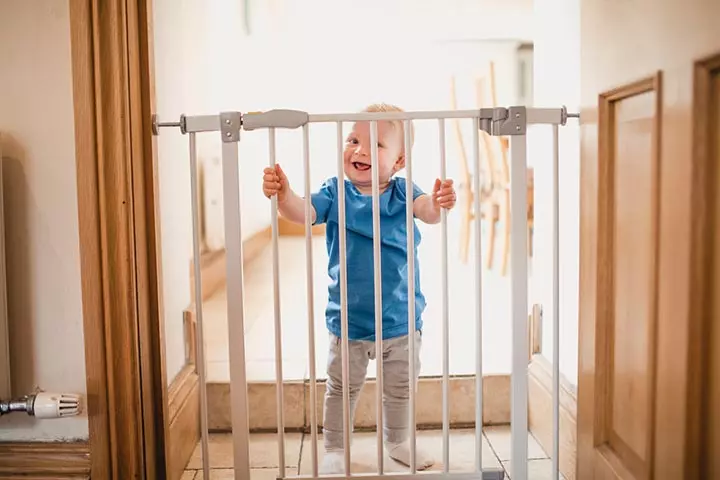
Image: S: iStock
Frequently Asked Questions
1. What are cruising shoes?
Cruising shoes are used before a baby learns to walk and switches to walking shoes. These flexible, soft, and supportive shoes protect their feet from sharp or hazardous objects and toys. They support the ankles and feet as the child learns to walk.
2. What’s the difference between crawling and cruising?
Crawling happens in a prone position, and all four limbs are used. Cruising is done upright on two legs while holding furniture or other objects for support.
3. What are the benefits of baby cruising?
Cruising helps babies strengthen their leg muscles, improves balance, and enhances coordination between their arms and legs. It also lets them discover their environment from a higher viewpoint, which helps improve their spatial awareness, depth perception, and a better understanding of their surroundings (10).
4. Is baby cruising safe?
Baby cruising can be safe when proper precautions are taken. Creating a baby-safe environment with sturdy furniture, eliminating potential hazards, and closely supervising the baby can reduce the risk of falls or accidents and ensure the baby safely transitions from cruising to independent walking.
5. Are there any risks associated with baby cruising?
Baby cruising is generally safe. However, it has a few potential risks, such as injuries like bumps and bruises due to accidental falls. Furniture-related accidents, such as tipping or collapsing, and the chances of getting trapped or entangled in small spaces or openings are more risks baby cruising poses. Cruising can also cause the baby to reach different places and obtain items and objects that are choking hazards. Hence, parental supervision when the baby begins cruising is essential.
Seeing your baby cruise is a call for celebration since they have achieved a major milestone in life. Once you notice your baby cruising, arrange your house such that they always have a supporting system around. As their walk might be wobbly, ensure you baby-proof the house and consider removing any hazards in their practice area. Usually, most babies start cruising at around eight to 12 months. However, understand that each baby develops at their own pace, and hence a little delay is still normal. Consult your pediatrician if your baby hasn’t started cruising even after 18 months of age.
Infographic: Baby Cruising: Exercises To Help Babies Take Their First Steps
Baby cruising is an important milestone that prepares them to transition from crawling to walking. While it isn’t necessary for all babies to cruise, most babies who cruise need parental support to strengthen their leg muscles and prepare for walking. Our infographic shares some exercises parents can try for their babies when they start cruising. You can discuss these exercises with your doctor and take their advice to improvise if needed. Illustration: Momjunction Design Team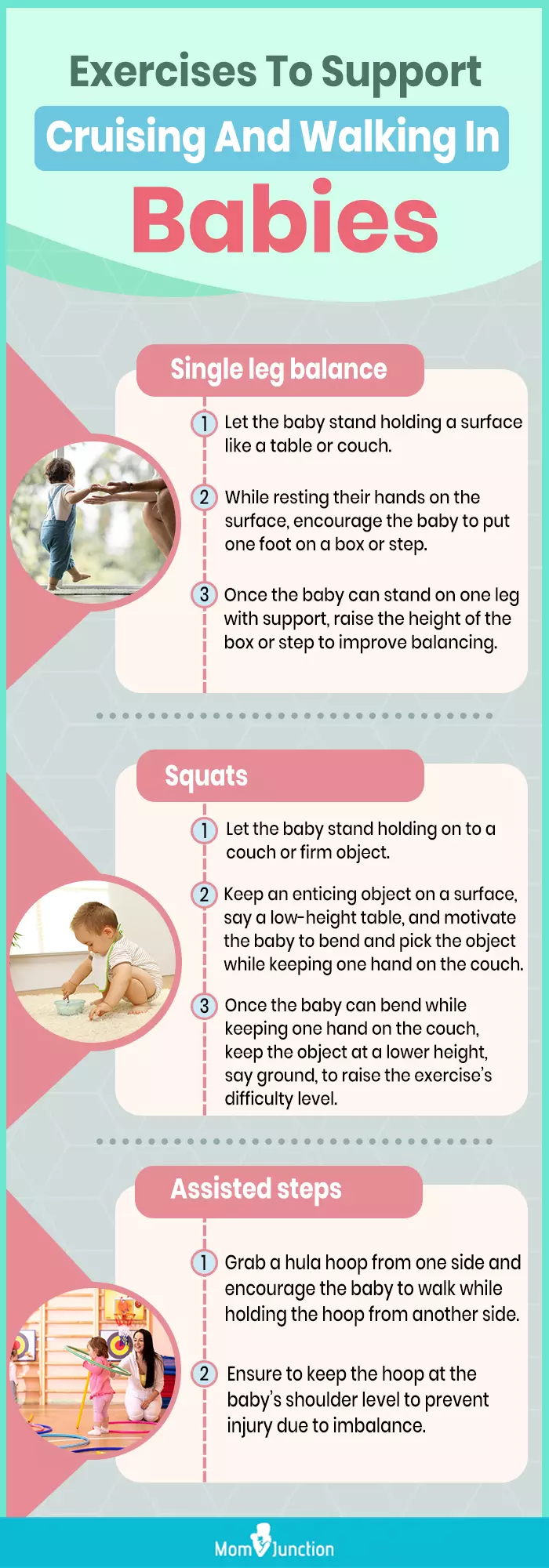
Illustration: When Does Baby Start Cruising And How To Encourage Them?

Image: Dall·E/MomJunction Design Team
Be ready to see your adorable munchkin cruise around and encourage them to take their first steps with these fun activities.
Personal Experience: Source
MomJunction articles include first-hand experiences to provide you with better insights through real-life narratives. Here are the sources of personal accounts referenced in this article.
i. List of when do babies cruise ideas;https://seniorhomecalling.blogspot.com/2022/07/list-of-when-do-babies-cruise-ideas.html
References
1. Movement: 8 to 12 Months; American Academy of Pediatrics
2. Important Milestones: Your Child By One Year; CDC
3. Important Milestones: Your Child By Eighteen Months; CDC
4. Karen E. Adolph, Sarah E. Berger, and Andrew J. Leo, Developmental Continuity? Crawling, Cruising, and Walking; U.S. National Library of Medicine
5. Your baby’s development: physical stages; NCT UK
6. Childproofing Your Home; American Academy of Pediatrics
7. Preparing the Environment; U.S. Department of Health & Human Services
8. Movement, Coordination and Your 8- to 12 month- old; Nemours Children’s Health
9. Try these activities to encourage walking; Pathways
10. Developmental Continuity? Crawling, Cruising, and Walking; NIH
Community Experiences
Join the conversation and become a part of our nurturing community! Share your stories, experiences, and insights to connect with fellow parents.
Read full bio of Dr. Anuradha Bansal
Read full bio of Rohit Garoo
Read full bio of Dr. Ritika Shah
Read full bio of Ghazia Shah








